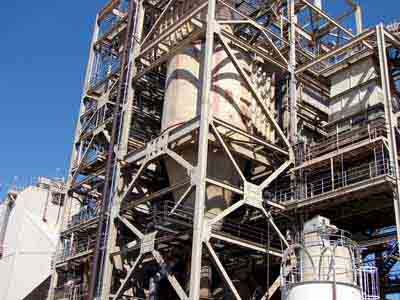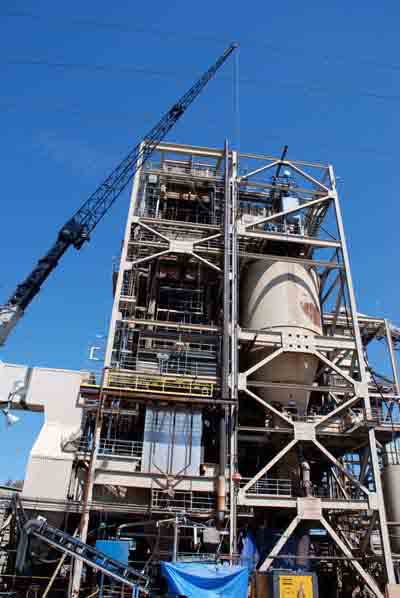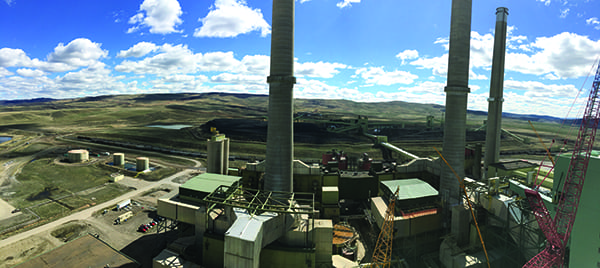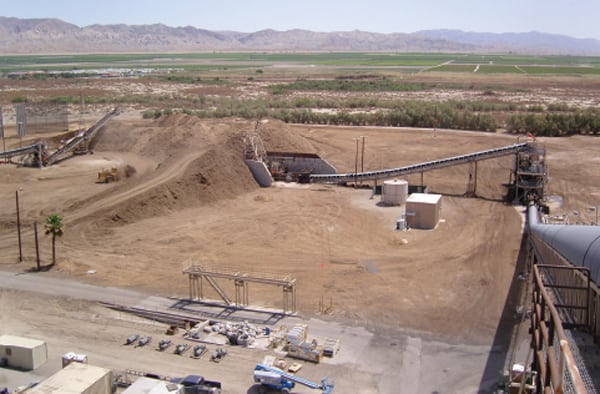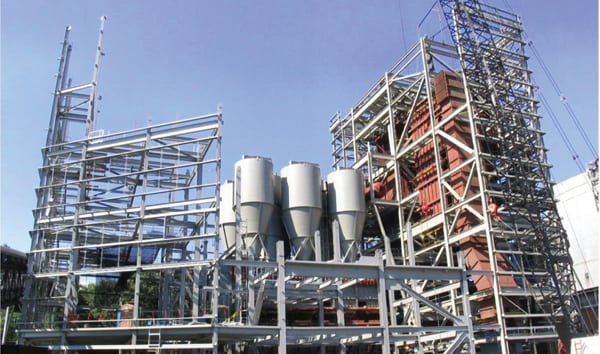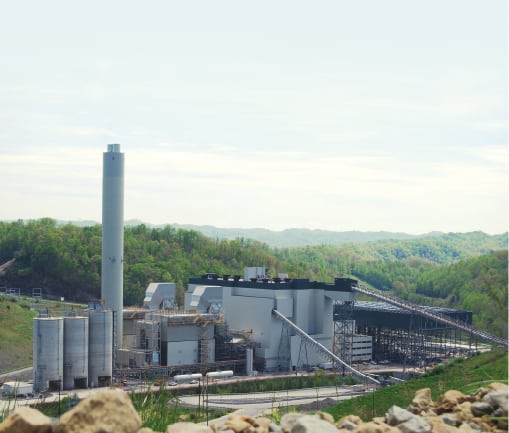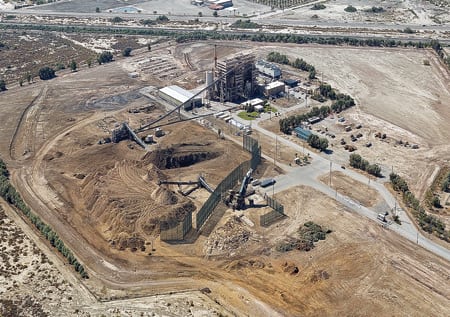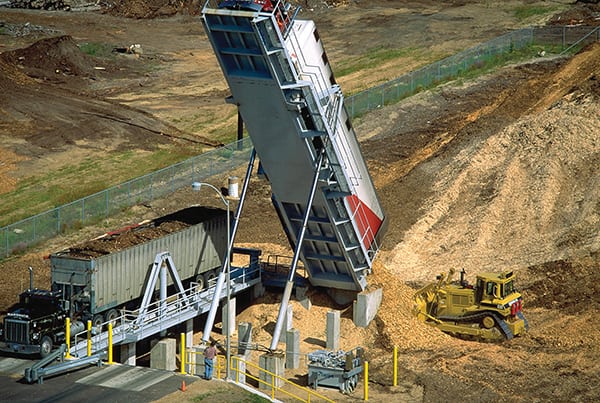Owners: Constellation Energy and North American Power Group Ltd.
Operator: Constellation Operating Services Inc.
By 2008, the 19-year-old wood-fired Rio Bravo Rocklin Power Station’s operating performance had been significantly degraded by boiler erosion and corrosion caused by (among many other problems) poor fuel. After much consideration, the plant owners elected to invest in a comprehensive upgrade to restore the plant to its as-built performance. Today, the plant operates very reliably. A newly implemented predictive maintenance program should continue to drive down operating costs and further reduce the number of forced outages.
Wood is good. It’s renewable and can be recycled in many ways. Waste wood products can also be used as renewable fuel for power generation, and California is probably more aware of this potential than any other part of North America. More biomass-fired generation units will be needed to meet that state’s audacious goals for renewable generation, but those units — like all renewable power generation technologies — will need to observe rigorous operation and maintenance (O&M) practices if they’re to deliver on their promise. One of our Top Plant awards in the renewables category goes to a plant that has learned that lesson and now points the way to success for others.
Biomass in California
California Governor Arnold Schwarzenegger’s April 2006 Executive Order S-06-06 extolled the virtues of biomass energy and called for the Golden State to produce 20% of its renewable electricity from biomass by 2010 and maintain that level through 2020. That goal was part of the state’s renewable portfolio standard (RPS), approved in 2006, requiring 20% of electricity to be powered by renewable sources by 2020. Schwarzenegger’s Executive Order S-21-09, signed on September 15, 2009, increased California’s RPS to 33% by 2020 — a very ambitious goal, especially for biomass-fueled power plants, whose megawatt-hours haven’t increased over the past 10 years. (See the table for the actual numbers.) All of the state’s RPS goals exclude large hydroelectric power sources that currently supply roughly 8% of the electricity consumed in California.
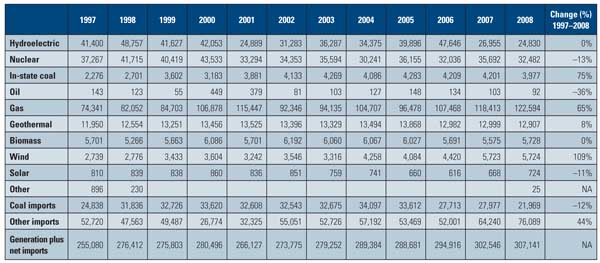
California’s historic energy mix. Biomass-fueled power generation has remained unchanged over the past 12 years. Electricity consumption is in MWh. Source: California Energy Commission
The entire biomass power plant fleet in California numbers around 50 and has a gross capacity of approximately 968 MW. These plants are typically solid-fueled combustion power plants and engines, boilers, and turbines operating on landfill gas, sewage digester gas, and biogas from animal manures. Another six projects totaling about 180 MW are advertising commercial operating dates in the last quarter of 2009, although four will burn municipal solid waste.
Of the 968 MW total, 136 MW is fueled by agricultural biomass, 262 MW by in-forest biomass and mill residues, and 570 MW by the biomass fraction of municipal wastes. Biomass projects operating at the end of 2008 supplied about 1.9% of the state’s electricity consumption needs, far short of Schwarzenegger’s 4% goal (20% of 20%) originally set for 2010. The odds don’t look good for meeting the biomass portion of the 2020 RPS goals.
The California biomass electricity market segment grew quickly in the 1980s, when more than half of the 50 biomass plants were constructed. These plants, representing about 625 MW, were constructed between 1983 and 1990 when lucrative power purchase agreements (PPAs) and production tax credits were available. The remaining third of the plants, those built since 1990, are generally smaller, and few use conventional solid-fuel combustion or selected municipal solid waste collection and combustion technologies.
Wood Is Tough to Burn
Biomass fuels, especially wood fuels characterized by widely different constituents and moisture contents, are more efficiently burned in a circulating fluidized bed (CFB) boiler than in a conventional stoker furnace. A CFB boiler also makes stack gas emissions easier to control and treat, which is an important consideration for a biomass plant located in or near inhabited areas. However, CFB boilers have presented unique challenges for their owners. CFB boilers may be able to efficiently handle a wider range of wood fuels, but the circulating of solid materials such as fuel ash and sand also increases erosion and corrosion of the combustor and heat transfer tubes.
One plant that has experienced these problems is the 25-MW Rio Bravo Rocklin Power Station (Rocklin), jointly owned by subsidiaries of Constellation Energy and North American Power Group Ltd. Rocklin is located on a 50-acre industrial site about 3 miles northeast of Roseville, Calif. (Figure 1).
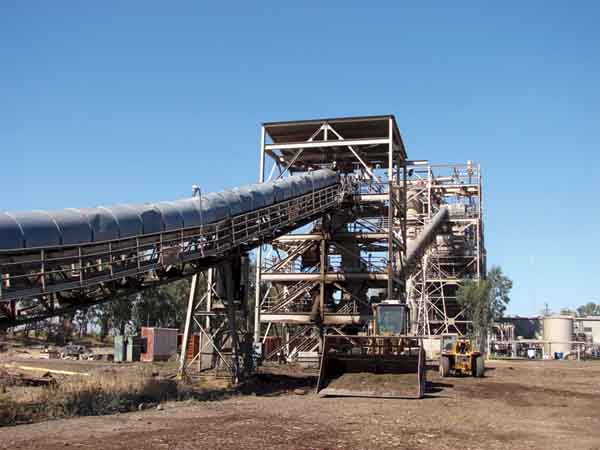
1. Rockin’ Rocklin. The 25-MW Rio Bravo Rocklin biomass-fired power station, located in central California, began commercial operation 20 years ago. The plant burns a combination of urban wood and forest wood wastes. This conveyor moves fuel from the storage yard to the boiler. Courtesy: Constellation Energy
Rocklin uses a CFB system supplied by Combustion Engineering (now Alstom Power) when the plant entered commercial service in 1989. Their system was based on the Lurgi CFB design that was popular at the time. The 28-MW steam turbine was supplied by MHI, and Brush provided the generator.
Sourcing wood fuels from waste wood sources is always a challenge. At Rocklin, a diverse group of fuel suppliers provided approximately 240,000 tons of urban wood waste, in-forest brush and clearing, and other wood-related products each year. Since Rocklin began commercial operation the plant has operated with an average capacity factor of around 77%, but ongoing operations problems and equipment failures caused many forced outages and started the red ink flowing several years ago (Figure 2). A highly prized Standard Offer No. 4 PPA with Pacific Gas & Electric (PG&E) provides the plant’s sole revenue stream (ignoring production tax credits and other unique California biomass incentives), so any outages instantly hit the plant’s bottom line.
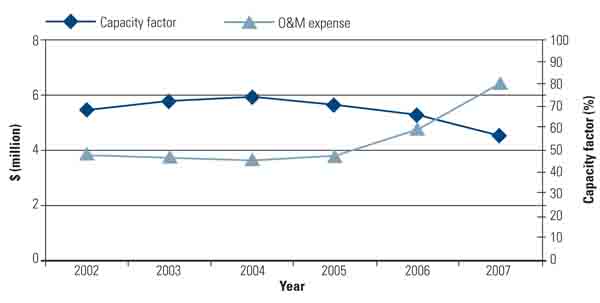
2. Ready for a change. Rocklin struggled for years to stay economic to operate when boiler and other plant problems put downward pressure on the plant’s capacity factor. Source: Constellation Energy
Unfortunately, Rocklin stuttered through several years of poor performance without making much improvement in its operating numbers. Many reliability improvement programs were implemented, but without much success. Each year the owners would invest in repairing a particular problem but have little to show for their investment as key operating metrics continued to slide. Most problems were highly interrelated, so solving problems in series never seemed to show progress. A more holistic solution that simultaneously resolved all the nagging problems was necessary. A compounding problem was that employees were frustrated with their inability to improve the plant’s reliability, and employee turnover was rising.
Develop an Integrated Plan
Today, Rocklin is running better than when the plant was first commissioned. We wanted to know the secret to its success, so POWER spoke with Stephen Gross, managing director, and Paul Shepard, vice president for Constellation Energy, who assumed asset/general management responsibility for Rocklin and its sister plant, the Rio Bravo Fresno Power Station, a couple of years ago.
As Gross noted, Rocklin had reached a "turning point": Either the plant was going to be fixed for the last time, sold, or derated to 18 MW (a 28% reduction) — a load the plant could reliably operate, but not economically.
A strategic analysis of the plant’s operations was guided by Gross and ably aided by consultant Sterling Energy early in 2008. The resulting report proposed four strategic options addressing the four major challenges the plant needed to meet before returning to design performance (see fishbone diagram for all the specific challenges faced).
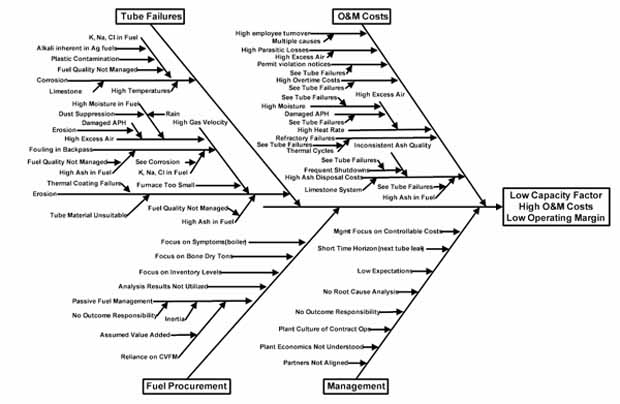
Fishing for problems. A fishbone diagram was prepared to visually represent the type of challenges that were addressed by the Rocklin staff and how interrelated so many of the problems are. This diagram was used to develop the scope of work for the plant upgrades. Source: Constellation Energy
The status quo was not acceptable given that it would lead to insufficient cash flow to sustain operations. After careful consideration, plant owners elected to make a significant investment in correcting the plant’s operational and management course and, in return, have a plant that operates at high reliability for many years to come.
A careful analysis of the plant’s "as found" condition identified the key problems that had to be resolved:
-
Poorly managed fuel supply
-
Reactive maintenance history
-
High employee turnover
-
Focus on only controllable costs and not on overall earnings or cash flow
The solutions to these problems — the primary elements of the plant’s turnaround plan — touched every facet of plant operations and are the focus of the rest of this section.
Assume Control of Fuel Management. The quality of the fuel supply had dropped over the years. Low-quality fuel led to increased boiler and equipment maintenance and, therefore, lower plant reliability. Historically, a series of fuel contracts were placed, and trucks of fuel arrived and left their loads on the fuel pile. However, purchases from the contract suppliers meant giving those suppliers the responsibility for delivering a quality fuel that met the contract guidelines. Rocklin’s experience was that suppliers often delivered fuels that were outside the fuel specification and that included rocks, sand, or noncombustibles or were high in potassium, sulfur, lead, or chlorine — all of which directly lead to increased boiler maintenance (Figure 3).
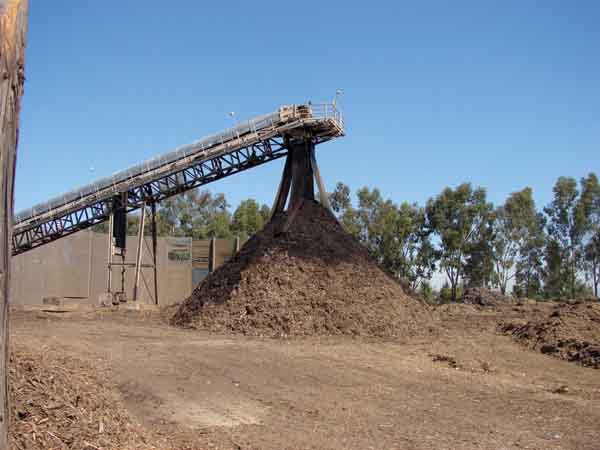
3. Fuel czar appointed. Rocklin cancelled its fuel supply management contract and appointed a member of the plant staff to directly contract with fuel suppliers and offer them incentives for high-quality fuel. Courtesy: Constellation Energy
To address this problem, plant management assumed control of the fuel supply by terminating the plant’s fuel supply management contract and then appointing a fuel manager with the specific responsibility of managing suppliers and holding the line on fuel quality. New suppliers that could reliably deliver clean fuel were added; those that could not were cut loose. New quality metrics were quickly instituted, as well as an incentive system for quality fuel deliveries. If a truckload did not meet the fuel specification, that load was rejected and removed by the fuel supplier from the plant.
Today, fuel purchases are made at a 3:1 ratio of qualified contract suppliers to spot market purchases. The quality of fuel delivered to the plant rose substantially as a result of the plant taking control of its fuel supply. The plant normally maintains an 18-to-20-day onsite supply of fuel.
Fix the Systems That Aren’t Working Properly. The owners invested about $14 million in the Rocklin renovations, which were primarily related to boiler refurbishment. A spring 2008 outage of about seven weeks that was managed by Constellation Energy’s Generation Services support group was scheduled to complete the boiler upgrades. A steam turbine overhaul was completed at the same time.
The scope of work for the boiler overhaul was extensive but necessary given the historic rates of boiler tube leak – caused forced outages. During the planned overhaul outage, the entire economizer was replaced, as was the primary superheater tube bank. The boiler water tubing in the combustion zone of the CFB was retubed. New retractable sootblowers were installed and calibrated. Just about every region of the boiler was either replaced or repaired, as in the case of badly corroded or eroded tubes that had routinely caused forced outages. Rotary valves and screws that feed the wood fuel into the CFB furnace were repaired or replaced. These components must operate against higher furnace-side operating pressures than those found in a typical coal-fired plant, so they remain high-maintenance components.
Another significant challenge was developing a program to repair combustor erosion on an ongoing basis. Rocklin has had some good success using thermal flame spray to repair eroded boiler tubes, although the process remains more art than science. Maintaining cyclone outlet temperatures less than 1,700F (full load at 25 MW) goes a long way toward reducing backpass erosion and corrosion, although at 1,600F alkali metals entrained in the fuels exacerbate corrosion — hence the need for quality fuel.
Today the plant schedules outages every two and one-half months to closely monitor tube wastage rates and refractory conditions and catch tube leaks before they occur. When an area of the boiler presents a continuing erosion problem, dimensional and other tube data are collected in an erosion profile history and then flame spray repairs are completed. Operators have established a comprehensive process of tracking boiler tube wastage rates and locations that guide the repairs made during these four- or five-day planned outages. As more experience is collected, the plant expects to slowly extend the time between these inspection outages by balancing repair costs against plant operating availability. According to Gross, 2010 will be a key year to learn how to balance those competing metrics; extending the interval between planned inspection outages should begin in 2011 or 2012.
Keep Your Plant Fully Staffed. Rocklin is located in Lincoln, Calif., about 30 miles northeast of Sacramento. Several gas-fired combined-cycle plants had been constructed nearby over the past few years, and those plants were successful in luring experienced technicians away from Rocklin. These employees were attracted by higher pay and the promise that it is much easier to burn natural gas than wood.
The turnover rate reached as high as 30% one year, which surely reduced the speed and quality of repairs needed by the plant. Plant management instituted a variety of successful work-life balance programs, and this new investment showed staff that the owners were committed to the plant’s future. Today, the technicians who remained enjoy a sense of satisfaction by being part of the plant’s turnaround, and turnover is almost zero.
Thanks to the plant upgrades, the plant operations staff is now able to escape the fire-fighting mentality that had been standard for so many years. There had previously been no focus on predictive maintenance. Now, plant staff have been retrained on the science and operation of the CFB and its O&M peculiarities, and a much more vigorous predictive and preventive maintenance program supported by Constellation Energy’s Enterprise Performance Group has been instituted, including a thermography program.
Control Your O&M Costs. Rocklin’s owners recognized that budget cutting would only "save our way into bankruptcy." The upgrade program was designed to focus on the plant’s long-term viability by making focused investments in solving all the key plant problems simultaneously, rather than chasing them individually.
There is no denying that the available 10-year production tax credit ($10/MWh) helped drive the owners’ decision to make this investment. The plant’s Standard Offer No. 4 PPA with PG&E signed in the late 1980s also has very attractive energy and capacity payment schedules that help support the plant’s operating economics. Together, the owners’ payback for their $14 million investment is now estimated at around three years. Post-overhaul plant availability has risen above 88%.
The current operating data also confirm that the plant’s forced outage rate has dropped significantly, to less than 1% for 2009 year-to-date — another key operating metric that is vital for the plant to continue to meets its projected pro forma (Figure 4).
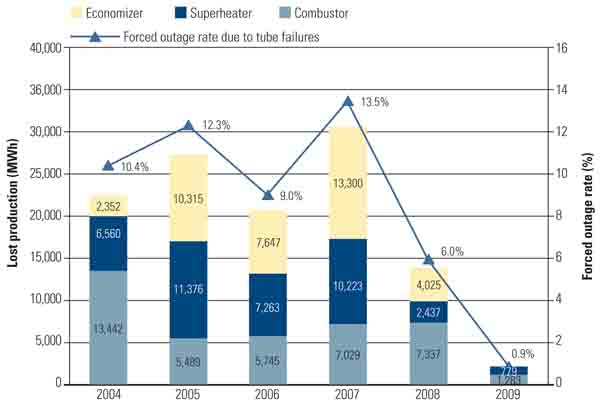
4. Lost money. Forced outages, principally caused by boiler tube leaks, had reduced electricity production below the owners’ expectations for many years. After investing in a comprehensive boiler upgrade project in early 2008, the improved plant performance is paying dividends in much-reduced lost production and a miniscule 0.9% forced outage rate in 2009. Source: Constellation Energy
A key point: Boiler tube wastage is also a function of the quantity of wood fuel consumed (and therefore the gas velocity), so increasing thermal efficiency reduces boiler maintenance as well as fuel cost. For example, the plant experienced 20 boiler tube leak "events" in 2005 and 25 in 2007, prior to the boiler upgrades. By mid-October 2009, Rocklin had experienced only two tube leaks all year.
More Challenges Remain
Rocklin has made a remarkable turnaround in short order, but Gross admits that it will be some time before they fully understand the art and science of reliably burning wood fuel in a CFB boiler. The plant is operating well today, which clearly confirms that the large capital cost of the upgrades was money well spent. However, according to the plant manager, Jack Snider, the plant staff are still searching for the "sweet spot" for applying metal spray to combustor and boiler tubes to reduce metal erosion wastage. They still grapple with the problem that maintaining the high cyclone outlet temperatures that are necessary to produce full load also increase boiler tube corrosion when certain corrosive elements are present in the fuel. A solution to such problems will only come with time, experience, and the staff’s dedication to continuous improvement (Figure 5).
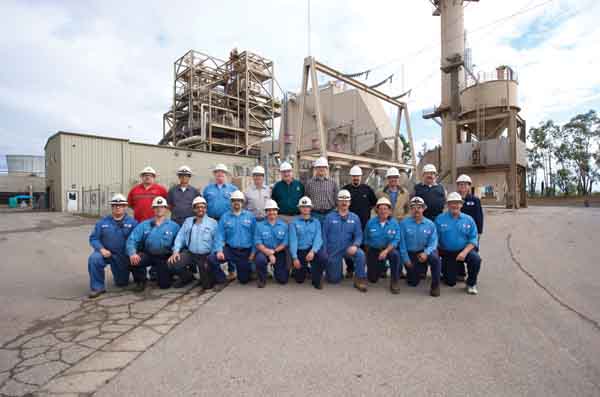
5. Loyal crew. Plant manager Jack Snider attributes Rocklin’s dramatic turnaround performance to its dedicated plant staff. Source: Constellation Energy
In the meantime, the owners and staff of Rocklin have performed a remarkable job in restoring a valuable biomass power plant to tip-top condition and reliable operation. These accomplishments are highly commendable and justify the selection of the Rio Bravo Rocklin Power Plant as a POWER Top Plant. For keeping the plant in California’s renewable resource mix for many years to come, all Californians should send their congratulations for a job well done.
—Dr. Robert Peltier, PE is POWER’s editor-in-chief.


